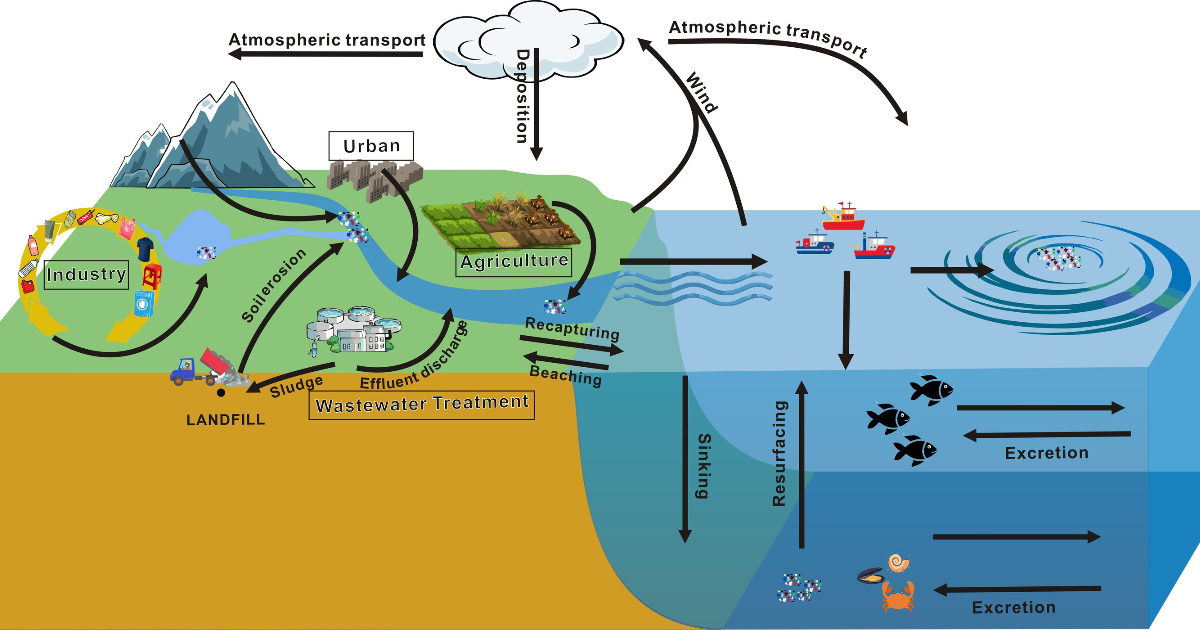- 3.0Impact Factor
- 6.0CiteScore
- 20 daysTime to First Decision
Microplastics and Their Impacts on Organisms and Trophic Chains
This special issue belongs to the section “Water Quality and Contamination“.
Special Issue Information
Dear Colleagues,
Microplastic pollution is a worldwide problem that has attracted extensive attention and has become a very hot topic in the scientific community. Microplastics are everywhere, such as in the ocean, wastewater, fresh water, soil, sediment, food, and air, and thus, they are readily available to the surrounding organisms. Recent advances in toxicology have resulted in greater understanding of the impact of microplastics on some specific aquatic organisms. There is still much to be learned about their impact on the trophic chains. Additionally, the associated chemicals, such as plastic additives, can be released from the microplastics and cause harm, and their combined effect needs more attention as well. This Special Issue of Water should be of great help in increasing the number of studies contributing to the scientific community and providing a comprehensive perspective on the impact of microplastics (including nanoplastics) and their additives. Our hope is for this collection to bring together research papers and reviews on the research topic.
Dr. Kai Zhang
Guest Editor
Manuscript Submission Information
Manuscripts should be submitted online at www.mdpi.com by registering and logging in to this website. Once you are registered, click here to go to the submission form. Manuscripts can be submitted until the deadline. All submissions that pass pre-check are peer-reviewed. Accepted papers will be published continuously in the journal (as soon as accepted) and will be listed together on the special issue website. Research articles, review articles as well as short communications are invited. For planned papers, a title and short abstract (about 250 words) can be sent to the Editorial Office for assessment.
Submitted manuscripts should not have been published previously, nor be under consideration for publication elsewhere (except conference proceedings papers). All manuscripts are thoroughly refereed through a single-blind peer-review process. A guide for authors and other relevant information for submission of manuscripts is available on the Instructions for Authors page. Water is an international peer-reviewed open access semimonthly journal published by MDPI.
Please visit the Instructions for Authors page before submitting a manuscript. The Article Processing Charge (APC) for publication in this open access journal is 2600 CHF (Swiss Francs). Submitted papers should be well formatted and use good English. Authors may use MDPI's English editing service prior to publication or during author revisions.
Keywords
- microplastics
- nanoplastics
- trophic transfer
- food chain
- plastic additives
- risk assessment
- emerging chemicals of concern

Benefits of Publishing in a Special Issue
- Ease of navigation: Grouping papers by topic helps scholars navigate broad scope journals more efficiently.
- Greater discoverability: Special Issues support the reach and impact of scientific research. Articles in Special Issues are more discoverable and cited more frequently.
- Expansion of research network: Special Issues facilitate connections among authors, fostering scientific collaborations.
- External promotion: Articles in Special Issues are often promoted through the journal's social media, increasing their visibility.
- e-Book format: Special Issues with more than 10 articles can be published as dedicated e-books, ensuring wide and rapid dissemination.

